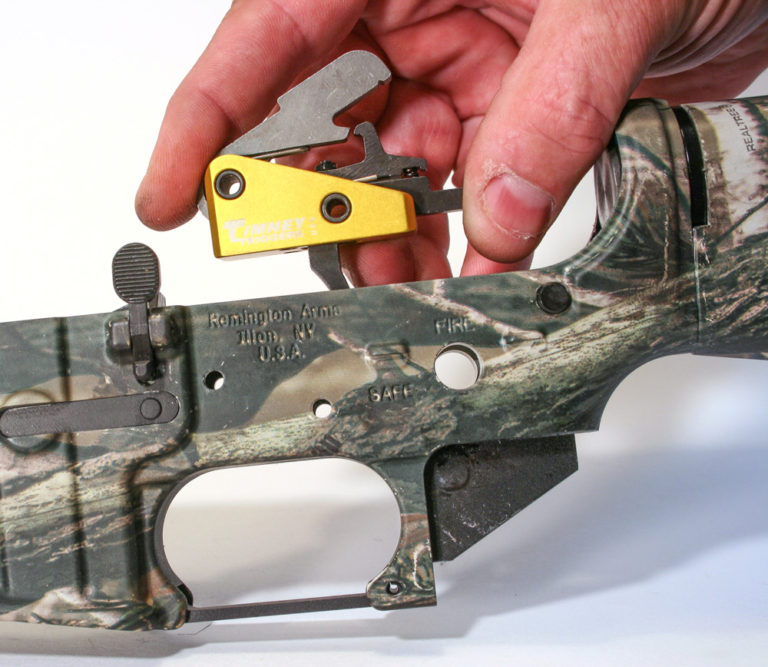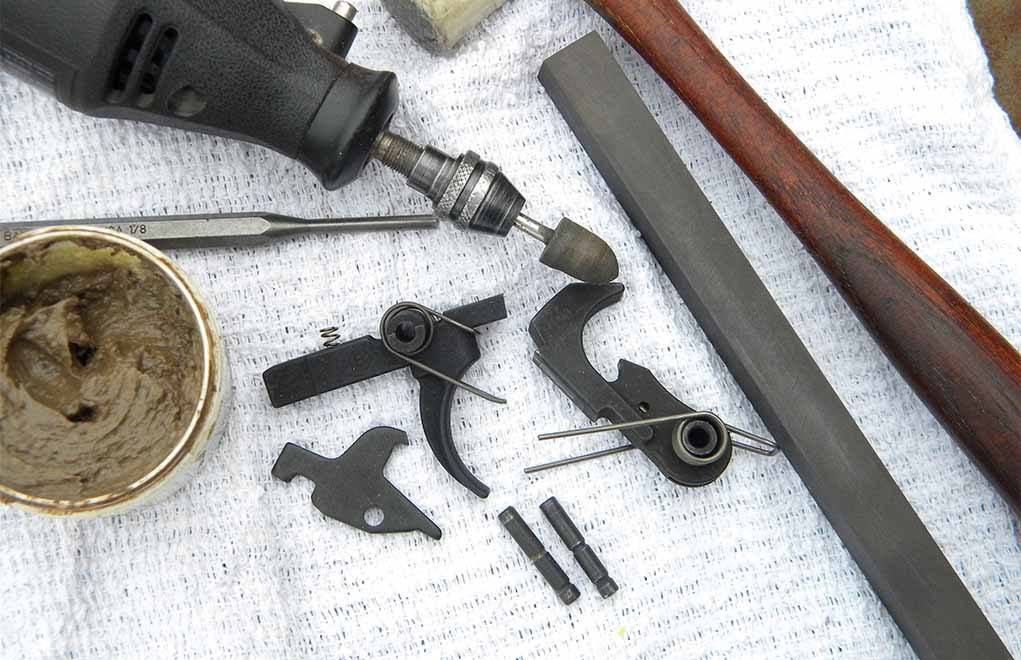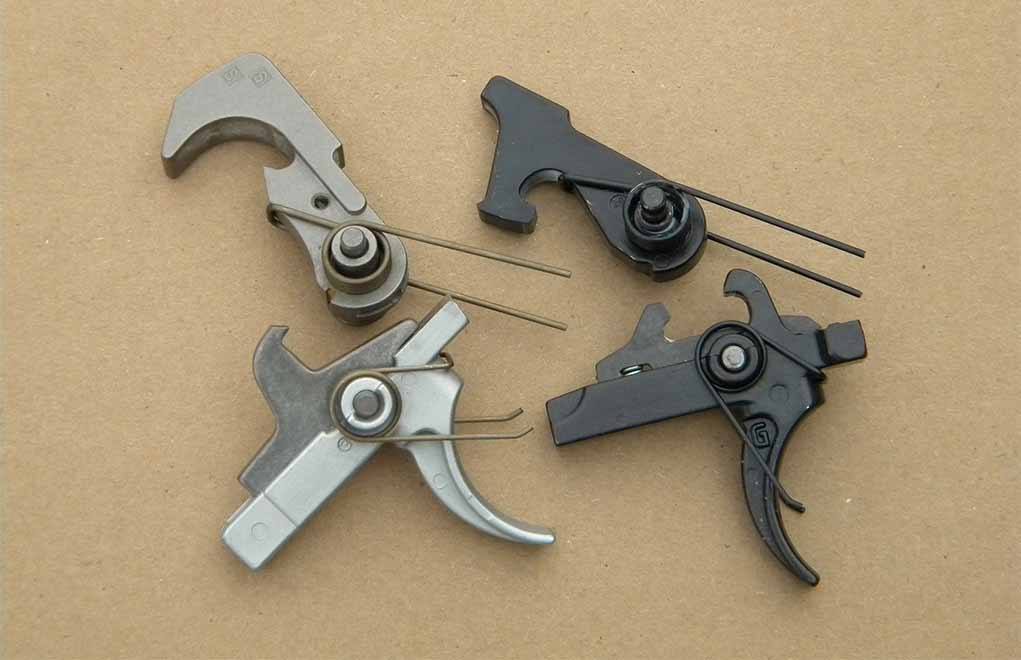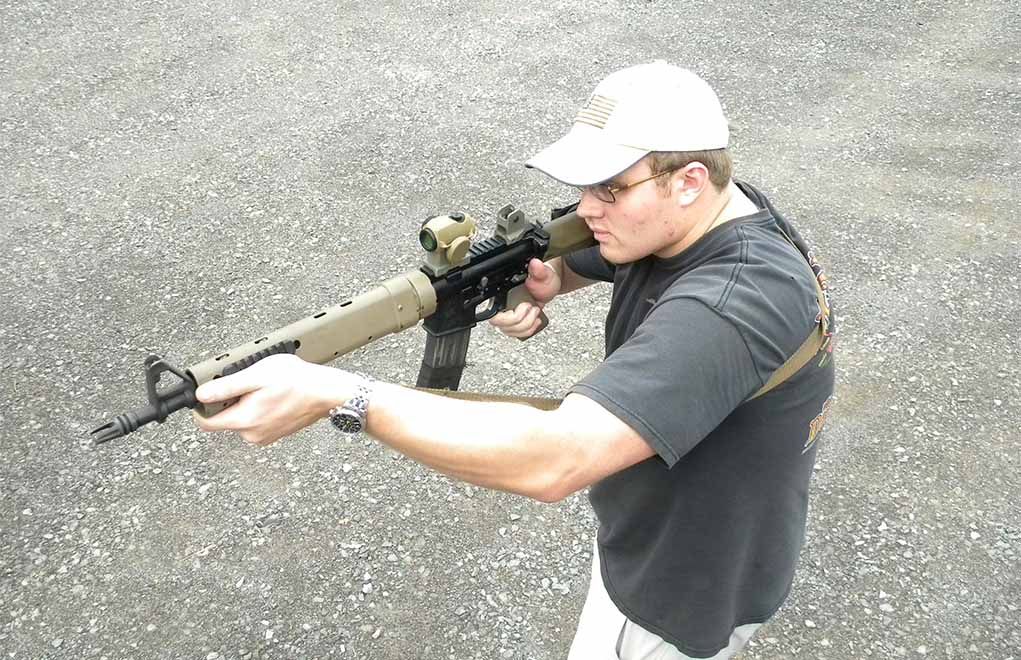
There is a slew of aftermarket AR-15 trigger upgrades out there, each offering a little something different. How do you choose?
What Factors Do You Need To Consider In An AR-15 Trigger Upgrade:
The AR’s modular design makes it easy to swap out parts, even for components like the entire trigger group. However, this is a double-edged sword: Yes, anyone with some mechanical sense (and sometimes a few specialty tools) can configure the AR to their liking, but parts such as the trigger group should be chosen carefully.
A good trigger must have three distinct attributes: smooth to cycle, crisp at the break and light throughout. Smooth and crisp are constants; they’re features desired in every trigger of any gun. Lightness or pull weight, meaning the amount of pressure required for the trigger to break, is more subjective. In fact, the proper trigger weight depends on your application. Trigger reset is another factor to consider, but it’s not quite worthy of a Top 3 designation.
Selecting the proper trigger is a critical part of making an AR your AR. So, let’s break this down a bit more.
Oh, So Smooth
A smooth trigger is a great advantage in the quest for accuracy. A crunchy, gritty trigger makes it difficult to get good hits, and it’s more important to consistent accuracy than many people realize. As you apply pressure to a poor-quality trigger, the trigger moves with a jerky motion, and then it stalls. You apply more pressure and the trigger jumps past that spot, causing you to jerk as it moves rearward. This action is repeated until — eventually — the trigger breaks, firing the shot. Every jerk of the trigger finger moves the sights off target due to pressure.

A smooth trigger allows you to press without stops and starts. It’s one uninterrupted pressure motion from start to finish, ensuring the shot is fired with minimal disruption of the sight picture each and every time. A good rifleman can shoot accurately with a heavy trigger as long as it’s smooth.
Extra Crispy
Being “crisp” is another desirable trigger trait. Ideally, pressure is applied to the trigger in a smooth and steady action as discussed above. Without any indication that it’s about to release the hammer, the trigger breaks, thus firing the shot. In a good trigger, there’s no mechanical pause or hesitation between the press and the actual release.
There are two techniques used to fire the shot. One school of thought — which is what I teach — is steady application of pressure to the trigger until the AR decides to fire. This is called a surprise break. Other shooters claim they can tell where the break is, so they press until only a couple of ounces are left, then pressing that off when the sights are perfect, essentially “deciding” when to fire the shot. This can be accomplished consistently, but only by expert marksmen. For the rest of us, especially beginners, making the weapon fire usually ends up with the shooter anticipating the recoil and jerking the sights off target at the last moment.

No matter what technique is used, a crisp trigger will make firing the shot much easier. This applies to a single-stage military-type trigger, which fires with one smooth press. This also applies to the two-stage trigger, where the first half or so of the trigger cycle requires one pressure, then it lightens up a good bit for the final movement, requiring very little pressure to fire the shot. Regardless of the type of trigger you’re using, it must be crisp.
Wearing The Weight
Pull weight is the most subjective feature among trigger considerations, and it’s almost exclusively dictated by application. An extremely light trigger is used for surgical-marksmanship-type target shooting, which is generally done from a bench. Competition or “match” triggers are just for those purposes. For law enforcement or self-defense use, you need a “combat” trigger.
Target triggers are very light, and they’re used for shooting a very tight group under controlled conditions. For this type shooting, a very light trigger pull is acceptable and recommended. Triggers will often break with a just a couple of pounds of pressure — sometimes only ounces. A target trigger is not to be used for any other application: Under any other type conditions, they’re too light to be safe.
Need More AR Knowledge:
- 7 Affordable 9mm Carbine Options
- Top Options In AR Pistols From Daniel Defense
- Properly Using A Defensive AR-15 From Cover
- Should You Own A Pistol Caliber Carbine?
Hunting and competition matches are “field” applications. You can use a match or competition trigger, which is what I call a medium-weight trigger. Usually, match/competition triggers will release at about 3½ to 4 pounds; however, hunting and competitions are still somewhat controlled conditions. It’s nothing like the disorder experienced during a fight. Match/competition triggers are still too light for combative settings. (Light triggers are often not heavy enough to ignite the primer in mil-spec type ammo.)
During a violent confrontation, you’ll be moving, using different firing positions and firing multiple shots. You’re under physical and mental stress because lives are on the line. During such an event, you’ll likely lose dexterity and feeling in the fingers. A trigger that’s too light will cause negligent, unintentional shots to be fired. I’ve seen this happen during training and practice — it will definitely become a problem under actual combative conditions.
I recommend a trigger weight of 5½ pounds for defensive use, but it still needs to be smooth and crisp. I also prefer this pull weight because it’s consistent with the pistols I carry. Fighting is chaotic: The more factors I can control, such as having a uniform trigger weight regardless of the weapon, the less variables I have to think about.
Trigger Reset Considerations
It’s also important to consider trigger reset. After the shot is fired, you relax your finger, releasing the trigger, but only to the point that the disconnector releases the hammer and it’s captured by the trigger — this is trigger reset. Now you’re ready to press through another shot.
Resetting the trigger is the key to firing multiple shots accurately and efficiently. Allowing the finger to lose contact with the trigger wastes time, plus it increases the chance you’ll jerk or slap the trigger on the next shot.
In most triggers, the lighter the trigger’s pull weight, the lighter or softer the reset feels. Reset on a light trigger is difficult to distinguish. If you’re not careful when firing multiple shots with a light reset, it’s easy to fire another round while trying to feel the trigger reset.
A positive trigger reset that’s easy to feel is mandatory for combative/defensive purposes. An advantage of the 5½-pound trigger is that the spring pressure is enough so that all you have to do is relax your finger and the trigger will reset itself.
Choosing Your Trigger
When choosing a trigger for your AR, make sure to carefully consider your intended application. For match/comp triggers, ask other shooters in that discipline what they use. For defensive work, you need a combat type trigger. No matter what the application, do not modify, hone or polish the trigger components. They are hardened, but only to a very shallow depth. Removing material is a sure path to a malfunction or negligent discharge with the fire-control group.

Once you decide what duties you need your trigger to perform, you can narrow it down to a specific type. There are adjustable triggers and drop-in triggers that are housed in pre-assembled, ready-to-install groups. There’s a lot of variety out there, and something will fit your needs perfectly. Do your research and upgrade that trigger now.
Just keep in mind that the proper trigger is a great accessory, but it won’t make up for a lack of skill. As always, practice the fundamentals: aim, hold, press and follow-through.
The article originally appeared in the April 2019 issue of Gun Digest the Magazine.

Next Step: Get your FREE Printable Target Pack
Enhance your shooting precision with our 62 MOA Targets, perfect for rifles and handguns. Crafted in collaboration with Storm Tactical for accuracy and versatility.
Subscribe to the Gun Digest email newsletter and get your downloadable target pack sent straight to your inbox. Stay updated with the latest firearms info in the industry.

![Best Concealed Carry Guns In 2025 [Field Tested] Wilson Combat EDC X9S 1](https://gundigest.com/wp-content/uploads/Wilson-Combat-EDC-X9S-1-324x160.jpg)


![Best 9mm Carbine: Affordable PCCs [Tested] Ruger Carbine Shooting](https://gundigest.com/wp-content/uploads/Ruger-Carbine-Shooting-100x70.jpg)
![Best AR-15: Top Options Available Today [Field Tested] Harrington and Richardson PSA XM177E2 feature](https://gundigest.com/wp-content/uploads/Harrington-and-Richardson-PSA-XM177E2-feature-100x70.jpg)
